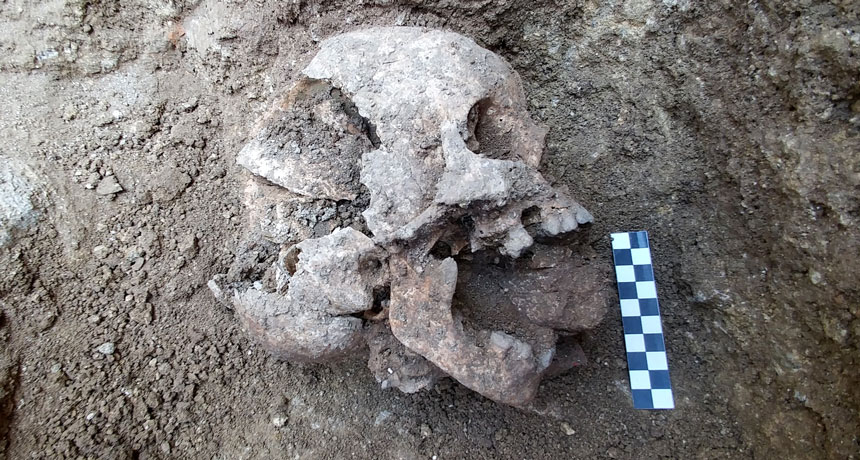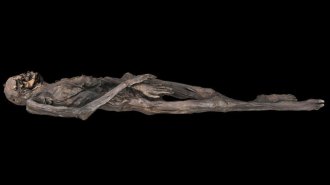An ancient child’s ‘vampire burial’ included steps to prevent resurrection
The 10-year-old’s skeleton had a stone placed in the mouth

STAY DEAD A child buried in a fifth century Roman cemetery had a stone placed in his or her mouth as part of a funeral ritual to keep the body from coming back to life, scientists say.
D. Pickel/Stanford Univ.







